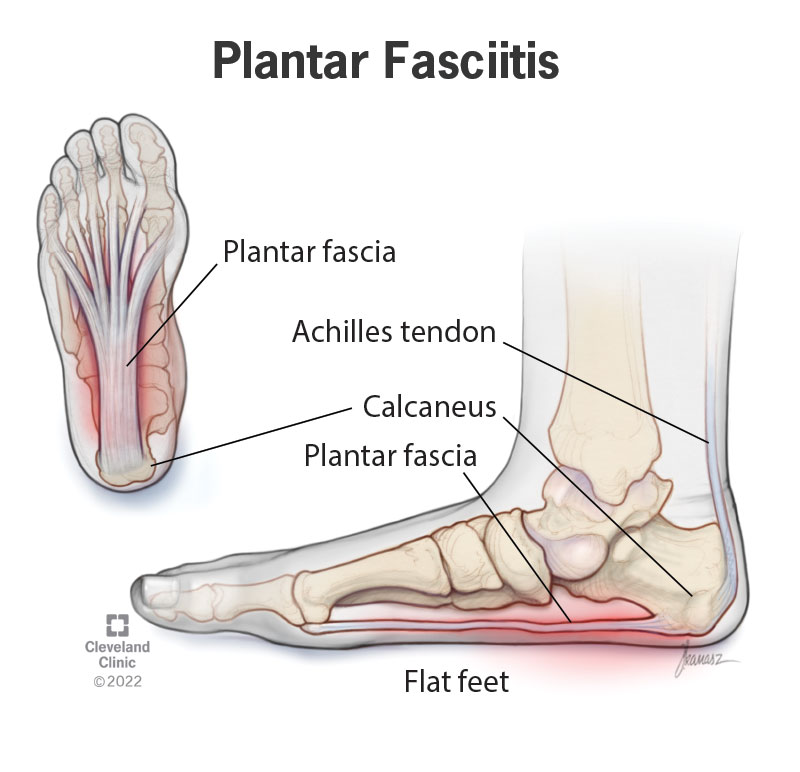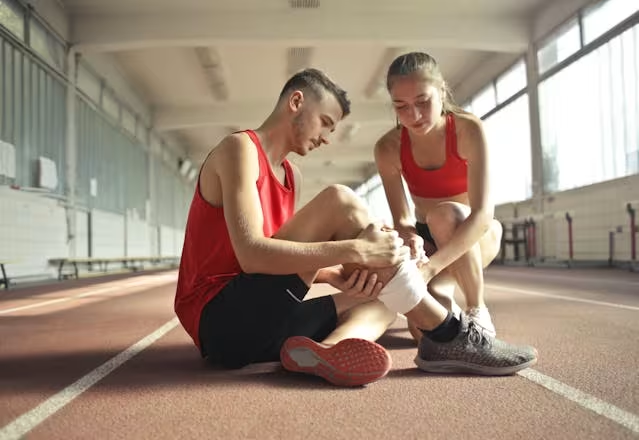Running has become increasingly popular among Singaporeans as more people embrace healthier lifestyles.
However, this surge in running participation has also led to a corresponding increase in running-related injuries and pain.
Whether you’re training for the Standard Chartered Singapore Marathon, participating in local park runs, or simply jogging around your neighborhood, understanding how to prevent and manage running pain is crucial for maintaining an active lifestyle.
Understanding Running Pain: More Than Just Discomfort
Running pain should never be dismissed as merely part of the sport.
When discomfort sets in during or after your runs, it often signals that your body has developed an injury requiring attention.
The tropical climate and urban environment of Singapore present unique challenges for runners, from high humidity levels to concrete surfaces that can impact your running mechanics and injury risk.
Sports medicine specialists in Singapore report that running pain complaints have become increasingly common, with many cases stemming from poor training progression, inadequate recovery, and biomechanical issues that develop over time.
Related article: Sports Doctors in Singapore: Guide to Finding a Suitable Specialist
The Scope of Running Injuries in Singapore
Research indicates that running injuries are far more prevalent than most people realize, with clinical studies revealing that approximately 40% of marathon runners experience injuries during their training cycles.
Knee-related problems account for 20-40% of all running pain complaints, and most injuries develop gradually through overuse rather than sudden trauma.
Middle-aged runners between 45-65 years face the highest injury risk, particularly those returning to exercise after periods of inactivity.
Singapore’s year-round running season, combined with local runners’ enthusiasm for participating in multiple events throughout the year, creates conditions where overuse injuries can develop if proper precautions aren’t taken.
You might like: Total Knee Replacement Surgery in Singapore
Primary Causes of Running Pain
Training Errors and Progression Issues
The most significant contributor to running pain involves training mistakes, particularly among enthusiastic runners who increase their mileage or intensity too rapidly.
The classic example involves runners who double their weekly distance when preparing for longer races, overwhelming their body’s ability to adapt to increased stress.
Biomechanical Factors
Poor running form creates excessive stress on specific body parts, leading to pain and injury over time.
Common biomechanical issues include overstriding with heavy heel striking, excessive vertical oscillation (bouncing), inadequate use of posterior chain muscles (hamstrings and glutes), poor arm mechanics and torso rotation, and inappropriate foot strike patterns.
Related article: Tennis Elbow Treatment in Singapore: Causes, Symptoms, Recovery
Environmental and Equipment Factors
Singapore’s urban landscape presents unique challenges with predominantly concrete and asphalt surfaces that provide little shock absorption. Additionally, wearing inappropriate or worn-out running shoes compounds the impact stress on your musculoskeletal system.
Physiological Factors
Nutritional deficiencies, particularly vitamin D insufficiency despite Singapore’s sunny climate, can increase injury susceptibility.
Many office workers experience this paradox of living in a tropical country while having limited sun exposure during daylight hours.
You might like: Golfers Elbow Treatment in Singapore: Causes, Symptoms, Cost
Most Common Running Injuries in Singapore
Shin Splints and Medial Tibial Stress Syndrome

Shin splints represent one of the most frequently encountered running injuries, affecting up to 35% of distance runners.
This condition involves inflammation along the inner aspect of the shinbone, typically resulting from:
- Rapid increases in training volume or intensity
- Running on hard surfaces without proper preparation
- Biomechanical inefficiencies in foot strike patterns
- Inadequate calf muscle strength and flexibility
The pain typically occurs during and immediately after running, sometimes persisting for hours.
In severe cases, runners experience nighttime discomfort that disrupts sleep patterns.
Patellofemoral Pain Syndrome (Runner’s Knee)

Runner’s knee affects the area around and beneath the kneecap, causing pain during running, stair climbing, and prolonged sitting.
Despite its common name suggesting it primarily affects runners, this condition can impact anyone with muscle imbalances around the hip and knee joints.
Key contributing factors include:
- Weakness in hip abductors and external rotators
- Tight iliotibial band and lateral structures
- Poor quadriceps strength and timing
- Excessive pronation or supination during foot strike
Related article: Knee Pain in Singapore: Causes, Treatment & Prevention
Iliotibial Band Syndrome
The iliotibial band, a thick connective tissue structure running from the hip to the knee, can become irritated through repetitive motion, causing sharp pain along the outer thigh and knee.
This condition particularly affects runners who train on cambered surfaces or have underlying hip weakness.
Plantar Fasciitis

This degenerative condition affecting the thick band of tissue supporting the foot arch causes stabbing heel pain, typically most severe during the first steps after periods of rest.
Contrary to popular belief, plantar fasciitis involves tissue degeneration rather than acute inflammation.
Risk factors specific to Singapore runners include:
- Extended periods of standing on hard surfaces
- Inadequate foot support in casual and work footwear
- Tight calf muscles from prolonged sitting
- Sudden increases in running volume on concrete surfaces
You might be interested: Arthritis Treatment in Singapore: Causes, Risks, Symptoms
Achilles Tendinopathy
The Achilles tendon, connecting the calf muscles to the heel bone, can develop pain and stiffness through repetitive stress.
This condition often develops gradually and requires careful management to prevent progression to more severe tendon damage.
Hip Flexor Strains
Hip flexor muscles, responsible for lifting the knee toward the chest during running, can become strained through inadequate warm-up routines or muscle imbalances.
This injury particularly affects runners who spend long hours sitting at desks.
Read more: Hip Replacement Surgery in Singapore: Cost, Risks
Risk Factors Specific to Singapore Runners
Age-Related Considerations
Middle-aged professionals returning to running after years of inactivity face particularly high injury risks.
The combination of decreased muscle mass, reduced flexibility, and enthusiasm to quickly return to previous fitness levels creates a perfect storm for overuse injuries.
Environmental Challenges
Singapore’s tropical climate, while allowing year-round outdoor activity, presents unique challenges for runners.
High humidity levels increase fatigue and alter running mechanics; consistent temperatures eliminate natural periodization that occurs in temperate climates.
Additionally, urban heat island effects create additional thermal stress, and limited variety in running surfaces due to urban development further compounds these challenges.
Lifestyle Factors
The demanding work culture in Singapore often leads to compressed training schedules, with many runners trying to maintain high training volumes despite time constraints.
This approach frequently results in inadequate recovery and increased injury susceptibility.
Diagnostic Approaches and Professional Assessment
When to Seek Professional Help
While minor muscle soreness after running is normal, certain symptoms warrant professional evaluation: pain that persists beyond 48 hours after running, discomfort that interferes with daily activities, progressive worsening of symptoms despite rest, sharp or burning sensations during movement, swelling or redness in affected areas, and recurring injuries in the same location.
Diagnostic Methods
Sports medicine professionals in Singapore utilize various assessment techniques to diagnose running-related pain:
Clinical Examination:
Comprehensive assessment of movement patterns, muscle strength, flexibility, and joint mobility.
Imaging Studies:
X-rays can rule out fractures, while MRI scans provide detailed views of soft tissue structures, helping identify stress reactions, tendon injuries, and muscle tears.
Gait Analysis:
Video analysis of running mechanics helps identify biomechanical factors contributing to pain and injury.
Functional Movement Screening:
Assessment of fundamental movement patterns reveals muscle imbalances and mobility restrictions.
Treatment Approaches for Running Pain
Conservative Management
The majority of running injuries respond well to conservative treatment approaches:
Rest and Activity Modification:
Temporary reduction or cessation of running activities allows tissues to heal.
Cross-training with low-impact activities like swimming or cycling maintains cardiovascular fitness while reducing mechanical stress.
Ice and Anti-inflammatory Measures:
Application of cold therapy helps manage acute pain and swelling, though prolonged use may impair natural healing processes.
Manual Therapy: Physiotherapy techniques including joint mobilization, soft tissue massage, and trigger point release help restore normal movement patterns and reduce muscle tension.
Advanced Treatment Options
For persistent or severe cases, Singapore healthcare providers offer sophisticated treatment modalities:
Radial pressure waves stimulate tissue healing and can effectively treat chronic tendon conditions like plantar fasciitis and Achilles tendinopathy.
Platelet-Rich Plasma (PRP) Therapy:
This regenerative treatment uses concentrated platelets from the patient’s blood to promote healing in damaged tissues.
Insertion of thin needles into trigger points helps release muscle tension and improve movement patterns.
Non-invasive radiofrequency treatment that stimulates cellular regeneration and reduces inflammation.
Surgical Interventions
When conservative measures fail, minimally invasive surgical options may be considered:
Keyhole Surgery: Small incisions allow surgeons to address specific structural problems while minimizing recovery time.
Tendon Repair Procedures: Advanced techniques can repair damaged tendons while preserving function.
Comprehensive Prevention Strategies
Training Progression and Load Management
The foundation of injury prevention lies in appropriate training progression.
The universally accepted “10% rule” suggests increasing weekly mileage by no more than 10% to allow adequate tissue adaptation.
Effective training periodization includes:
- Gradual volume increases over 3-4 week cycles
- Regular deload weeks with reduced training stress
- Incorporation of different training intensities
- Adequate recovery between hard training sessions
Biomechanical Optimization
Proper running form significantly reduces injury risk:
Cadence:
Aim for 170-180 steps per minute to reduce overstriding and impact forces.
Foot Strike: Focus on landing with feet closer to your center of gravity rather than far in front of your body.
Posture:
Maintain upright posture with slight forward lean from the ankles, not the waist.
Arm Mechanics:
Keep arms relaxed with elbows bent at approximately 90 degrees, avoiding excessive cross-body movement.
Strength and Conditioning
A comprehensive strength program addresses common weakness patterns in runners:
| Muscle Group | Key Exercises | Frequency |
|---|---|---|
| Hip Abductors | Side-lying leg lifts, clamshells | 3x/week |
| Glutes | Squats, single-leg deadlifts | 2-3x/week |
| Core | Planks, dead bugs, bird dogs | Daily |
| Calves | Heel raises, eccentric drops | 3x/week |
| Hip Flexors | Dynamic lunges, leg swings | Pre-run |
Recovery and Regeneration
Recovery represents a crucial yet often overlooked aspect of training:
Sleep:
Aim for 7-9 hours of quality sleep to support tissue repair and adaptation.
Nutrition:
Adequate protein intake (1.2-1.6g/kg body weight) supports muscle recovery and adaptation.
Hydration:
Singapore’s climate demands increased fluid intake, particularly during longer training sessions.
Stress Management:
Chronic stress impairs recovery and increases injury susceptibility.
Footwear and Equipment Considerations
Running Shoe Selection
Proper footwear plays a critical role in injury prevention:
- Replace shoes every 400-500 kilometers or when tread patterns show significant wear
- Consider foot type and gait pattern when selecting shoes
- Gradually transition to new shoes rather than switching immediately
- Maintain multiple pairs in rotation to vary stress patterns
Surface Considerations
While Singapore’s urban environment limits surface variety, strategic choices can reduce injury risk by incorporating softer surfaces like park connectors and tracks when possible, avoiding excessive camber by running in both directions on curved paths, and being cautious on wet surfaces which can alter running mechanics.
Nutrition and Hydration for Singapore Runners
Vitamin D Optimization
Despite abundant sunshine, many Singaporeans experience vitamin D deficiency due to indoor lifestyles.
Adequate vitamin D levels support bone health and may reduce stress fracture risk. Consider supplementation if blood levels are suboptimal.
Hydration Strategies
Singapore’s tropical climate demands careful attention to hydration:
- Pre-hydrate with 500-600ml of fluid 2-3 hours before running
- Consume 150-250ml every 15-20 minutes during runs longer than 60 minutes
- Include electrolyte replacement for sessions exceeding 90 minutes
- Monitor urine color as a hydration indicator
Recovery and Rehabilitation Protocols
Progressive Return to Running
After injury, returning to running requires systematic progression:
Phase 1: Pain-free walking and basic strengthening exercises
Phase 2: Introduction of jogging intervals with walk breaks
Phase 3: Gradual increase in continuous running duration
Phase 4: Progressive addition of speed and hill training
Phase 5: Return to full training load
Cross-Training Options
Low-impact activities maintain fitness while reducing mechanical stress, including swimming for excellent cardiovascular conditioning without impact stress, cycling to develop leg strength while maintaining aerobic capacity, elliptical training that mimics running motion with reduced joint loading, and rowing that engages the entire body while being joint-friendly.
Professional Support in Singapore
Healthcare Provider Selection
Singapore offers various healthcare professionals specializing in running injuries:
Sports Medicine Physicians: Comprehensive diagnosis and treatment of sports-related injuries
Physiotherapists: Movement assessment, manual therapy, and rehabilitation programs
Podiatrists: Foot and ankle specialization, gait analysis, and orthotic prescription
Exercise Physiologists: Training optimization and performance enhancement
When to Seek Multiple Opinions
Complex or persistent injuries may benefit from multidisciplinary approaches. Don’t hesitate to seek second opinions if initial treatments aren’t providing expected improvements.
Long-term Consequences of Untreated Running Pain
Progression to Chronic Conditions
Ignoring early warning signs can lead to more serious problems:
- Stress fractures may develop from untreated stress reactions
- Chronic tendinopathies become increasingly difficult to treat
- Compensatory movement patterns can create additional injury sites
- Joint degeneration may accelerate with persistent biomechanical problems
Impact on Quality of Life
Untreated running injuries can affect daily activities beyond running, potentially limiting work performance and recreational activities.
Creating Your Personal Injury Prevention Plan
Assessment and Goal Setting
Begin by honestly evaluating your current running practices: review your training history and injury patterns, assess your current fitness level and running goals, consider your available time for training and recovery, and evaluate your access to professional support and facilities.
Implementation Strategies
Develop a systematic approach to injury prevention by establishing consistent training routines with built-in progression.
Schedule regular assessments with qualified professionals, maintain detailed training logs to identify patterns, and prioritize recovery as much as training intensity.
Frequently Asked Questions
How do I know if my running pain is serious enough to see a doctor?
Seek professional evaluation if pain persists beyond 2-3 runs, interferes with daily activities, or progressively worsens despite rest.
Sharp, stabbing pains or symptoms accompanied by swelling warrant immediate attention.
Can I continue running with minor pain?
Minor muscle soreness after running is normal, but pain during running or pain that affects your running form should be addressed.
Continuing to run through pain often leads to more serious injuries and longer recovery periods.
How long should I rest when experiencing running pain?
Rest duration depends on injury severity and type.
Minor muscle soreness may resolve with 1-2 days of easy activity, while more significant injuries might require several weeks of modified training.
Professional assessment helps determine appropriate rest periods.
What’s the difference between shin splints and stress fractures?
Shin splints typically involve muscle and connective tissue inflammation, causing diffuse pain along the shin.
Stress fractures create localized, sharp pain at specific points and often cause nighttime discomfort.
Stress fractures require longer healing periods and complete rest from impact activities.
Should I use ice or heat for running injuries?
Ice is generally preferred for acute injuries with swelling and inflammation, typically within the first 48-72 hours.
Heat may be beneficial for chronic conditions or muscle tension, but avoid heat on acutely injured tissues.
When in doubt, consult healthcare professionals for specific guidance.
How often should I replace my running shoes?
Replace running shoes every 400-500 kilometers or 6-8 months, whichever comes first.
Heavier runners or those with inefficient running mechanics may need more frequent replacement.
Signs of wear include compressed midsole foam, worn tread patterns, and uneven wear patterns.
Is it normal to feel pain when starting a running program?
Some muscle soreness is expected when beginning any exercise program, but sharp pains, joint discomfort, or pain that worsens with continued activity are not normal.
Begin gradually and listen to your body’s feedback to distinguish between adaptation and injury.
Can poor running form cause injuries even if I’m not training intensively?
Yes, biomechanical inefficiencies can cause injuries regardless of training volume. Even recreational runners can develop overuse injuries from poor form, particularly when running on hard surfaces or with inappropriate footwear.
What role does nutrition play in running injury prevention?
Proper nutrition supports tissue repair and adaptation to training stress.
Adequate protein intake, sufficient calories for energy demands, and key nutrients like vitamin D and calcium are essential for injury prevention and recovery.
How do I find qualified sports medicine professionals in Singapore?
Look for healthcare providers with sports medicine specialization and experience treating runners.
Many public and private hospitals in Singapore have sports medicine departments.
Professional running groups and local running stores often provide referrals to trusted practitioners.
Should I completely stop all physical activity when injured?
Complete rest is rarely necessary unless dealing with stress fractures or severe injuries.
Most conditions benefit from modified activity that maintains fitness while allowing healing. Cross-training with low-impact activities often provides the best approach.
How can Singapore’s climate affect my injury risk?
High humidity and temperatures can increase fatigue, potentially leading to form breakdown and increased injury risk.
Dehydration can also affect muscle function and coordination. Adjust training times to avoid peak heat and humidity when possible.
What’s the best way to warm up before running in Singapore’s climate?
Start with gentle movement and dynamic stretching rather than static stretching.
In Singapore’s warm climate, extensive warm-up may not be necessary, but gradual progression from walking to easy jogging helps prepare your body for more intense effort.
Can running injuries affect my performance at work?
Many running injuries, particularly those affecting the lower limbs, can impact daily activities including prolonged sitting, stair climbing, and walking.
Early treatment helps prevent injuries from interfering with work performance.
How do I balance training for multiple running events throughout the year?
Singapore’s year-round running season allows for continuous training but requires careful periodization to prevent overuse injuries.
Plan training cycles with adequate recovery between events and consider alternating focus between different race distances.

